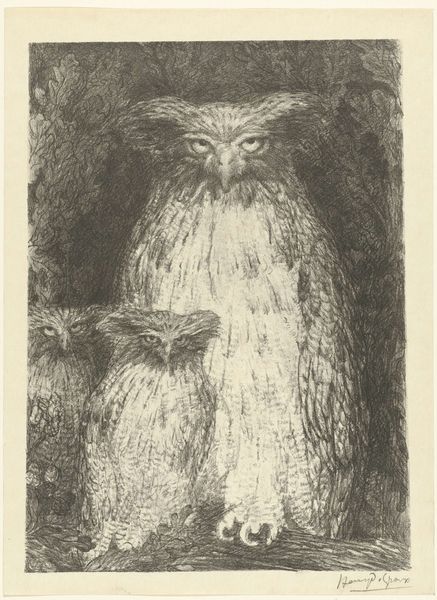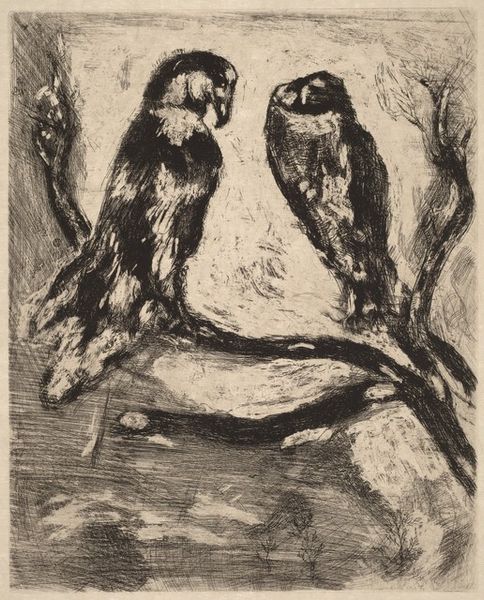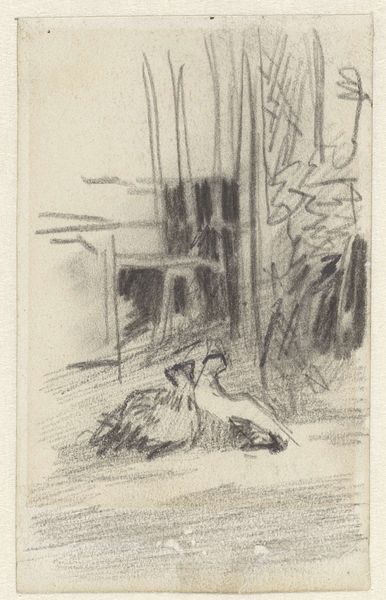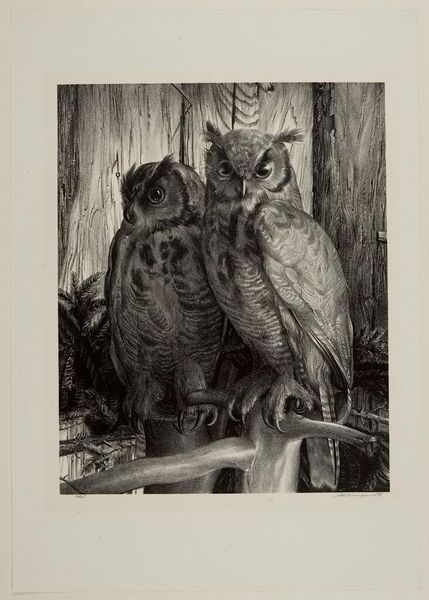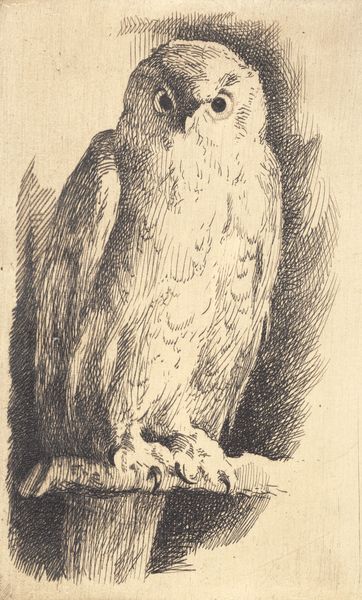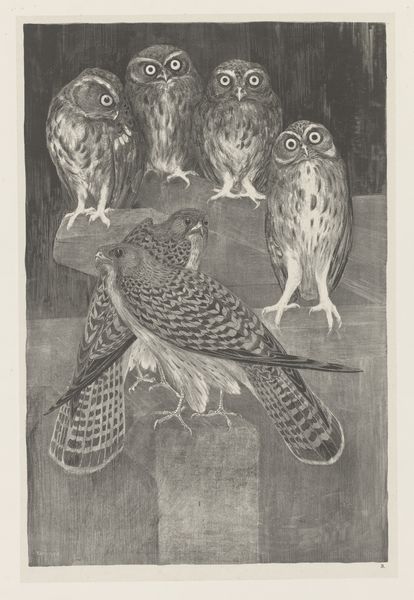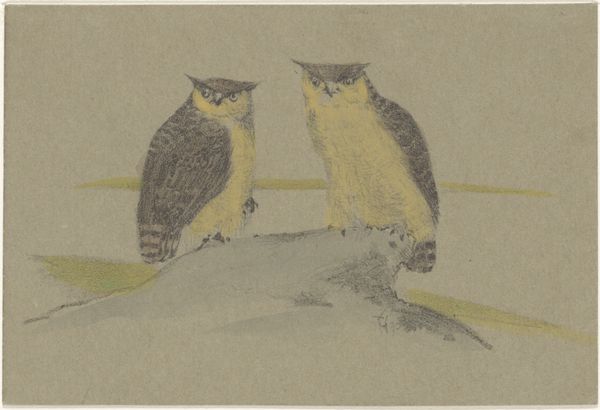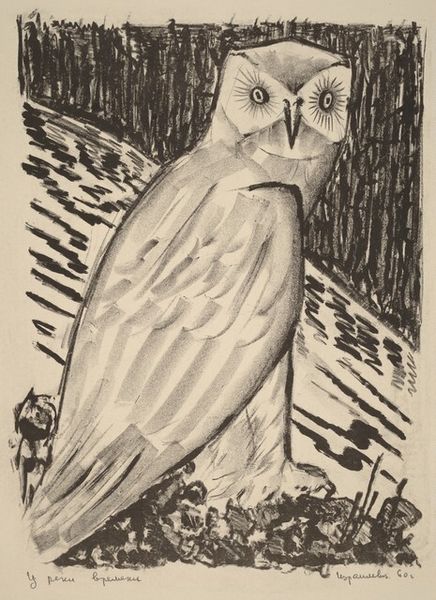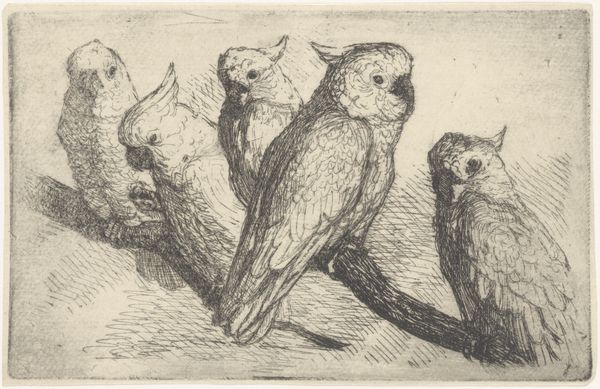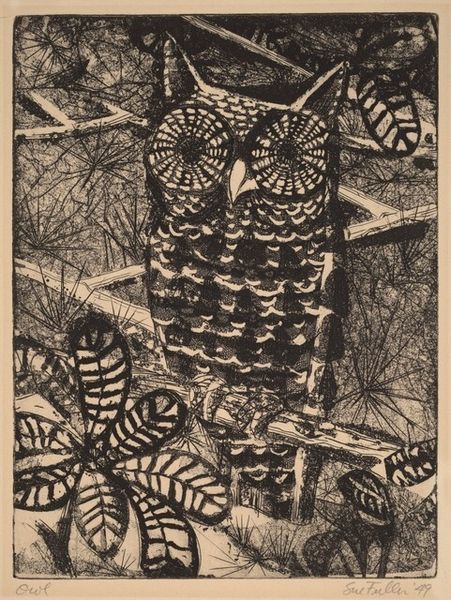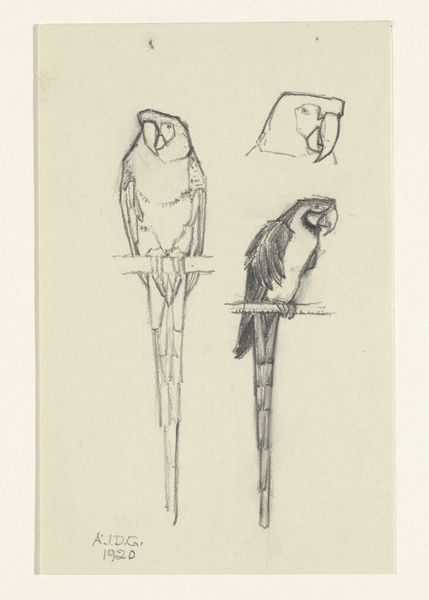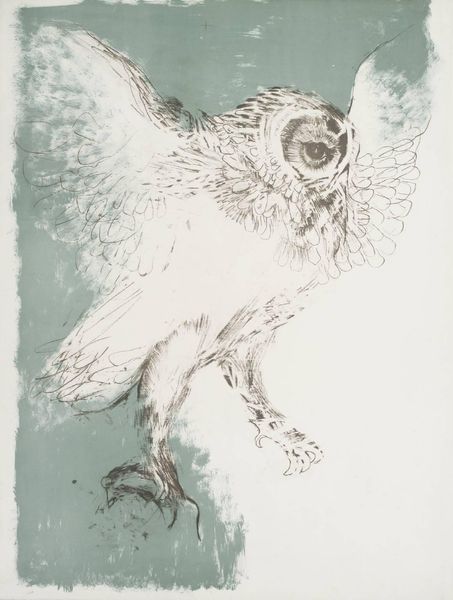
drawing, paper, pencil
#
portrait
#
drawing
#
light pencil work
#
quirky sketch
#
pen sketch
#
pencil sketch
#
paper
#
personal sketchbook
#
ink drawing experimentation
#
pen-ink sketch
#
pencil
#
sketchbook drawing
#
sketchbook art
#
fantasy sketch
#
realism
Dimensions: height 138 mm, width 181 mm
Copyright: Rijks Museum: Open Domain
Editor: This is "Twee studies van een uil", or "Two Studies of an Owl," made sometime between 1864 and 1936 by Jan van Essen, now housed in the Rijksmuseum. It's a delicate pencil drawing; you can almost see the artist's hand moving across the paper. It feels so immediate, like a glimpse into their personal sketchbook. What cultural context can you offer when looking at this piece? Curator: Well, immediately I'm drawn to the role of the artist as observer. Throughout the 19th and early 20th centuries, there was increasing scientific interest in accurately documenting the natural world. But it was also a time of increasing urbanization. Consider how artists used their skills to translate scientific observation into art. Do you see any kind of statement in Jan van Essen's approach? Editor: I notice there’s a realism to it, sure, but the almost haphazard nature of the drawing—it being two studies on one page, like notes— feels very different than like, an Audubon illustration, for instance. It seems more personal. Curator: Exactly. And it reflects a shifting cultural understanding of nature itself. Nature was transforming, and becoming endangered, through environmental transformation, technological interventions, colonization, and industrial extraction. This artist perhaps captured what was around him but perhaps also wanted to keep a copy of what was starting to become displaced. How do you see that working within the institutional structure of art and science at the time? Editor: Hmmm. It is interesting to think that this was him trying to grasp what he saw and keep it preserved in paper, a fantasy perhaps. Thanks, that makes me see it with new eyes. Curator: And thinking about the piece helps us examine the wider societal attitudes toward nature and art during the artist's lifetime. There's much to ponder.
Comments
No comments
Be the first to comment and join the conversation on the ultimate creative platform.
